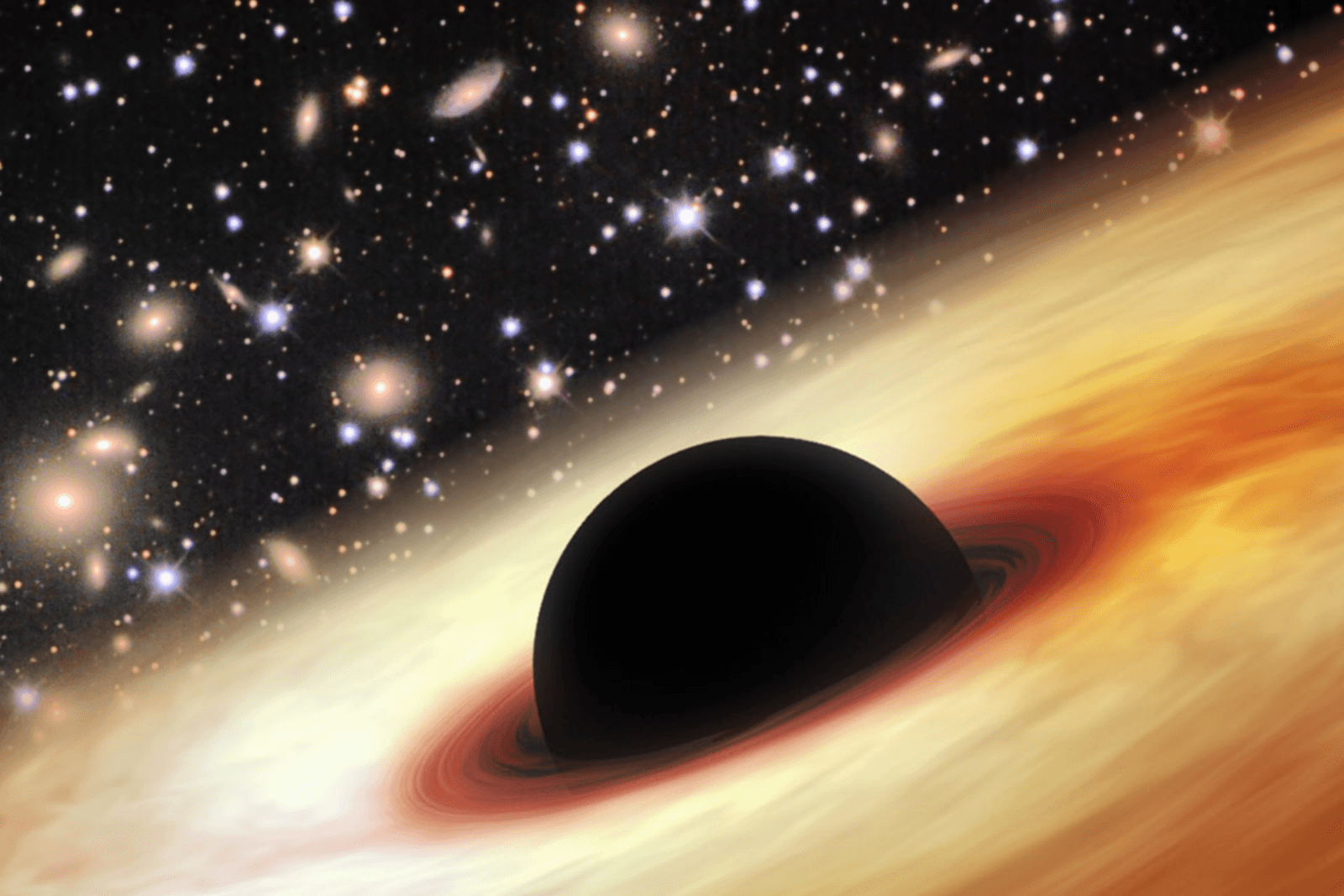Scientists Discover the Most Luminous Quasar with an Ultramassive Black Hole in the Distant Universe

February 25, 2015

Using the observational data from the 2.4 meter Lijiang Telescope in Yunnan China, the 6.5-meter Multiple Mirror Telescope, and the 8.4m Large Binocular Telescope in Arizona, USA, the 6.5m Magellan Telescope in Las Campanas Observatory, Chile, and the 8.2m Gemini North Telescope in Mauna Kea, Hawaii, USA, an international team led by Xue-Bing Wu, the associate director of Kavli Institute for Astronomy and Astrophysics (KIAA) and a professor at Department of Astronomy of Peking University, discovered a new quasar with a central black hole mass of 12 billion solar masses and a luminosity of 430 trillion solar luminosity, at a distance of 12.8 billions light years from the Earth. This is the most luminous quasar ever discovered in the early Universe, powered by the most massive black hole yet known at that time. The discovery of this quasar, named SDSS J0100+2802, marks an important step in understanding how quasars, the most powerful objects in the Universe, have evolved from the earliest epoch, only nine hundred million years after the Big Bang. This discovery was published in the top scientific journal Nature on February 26, 2015.
Discovered in 1963, quasars are the most powerful objects beyond our Milky Way Galaxy. They shine as their central supermassive black hole actively accretes surrounding materials. Thanks to large digital sky surveys, astronomers have discovered more than 200,000 quasars, ages ranging from 0.7 billion years after the Big Bang to today, with corresponding redshifts from 7.085 to 0.05. (Due to the expansion of the Universe, objects are moving away from us. Wavelength of light received by us is smaller than that of the originally emitted light. Redshift is defined as the ratio of the wavelength difference to the original wavelength.)
High-redshift quasars allow us to trace the structure and evolution of the early Universe. However, despite their high luminosity, they still appear faint due to their large distance, which makes them very difficult to find. Among the 200,000 quasars discovered to date, only about 40 are 12.7 billion light year away with redshift higher than 6.

In recent years, a team led by Xue-Bing Wu at Peking University has developed a method to effectively select quasars with redshift higher than 5 based on optical and near-infrared photometric data. With spectroscopic follow-up observations, they have systematically discovered a large number of new high-redshift quasars. SDSS J0100+2802 is one among them, but has the highest redshift.
The first optical spectrum obtained on December 29, 2013 by the 2.4m Lijiang Telescope shows that it is likely a quasar with redshift higher than 6.2. Active international collaborations allowed this team to further gather data from the Multiple Mirror Telescope, the Large Binocular Telescope, the Magellan Telescope, and the Gemini Telescope. By carefully analyzing these data, the team confirmed SDSS J0100+2802 as a quasar with redshift of 6.3 and estimated its intrinsic properties. At 430 trillion solar luminosity, this new quasar is 7 times brighter than the most distant quasar known (which is 13 billion years away). It harbors a black hole with mass of 12 billion solar masses, proving it to be the most luminous quasar with the most massive black hole among all the known high-redshift quasars.
“This quasar is very unique. We are so excited, when we found that there is such a luminous and massive quasar only 0.9 billion years after the Big Bang. Just like the brightest lighthouse in the distant Universe, its glowing light will help us to probe more about the early Universe.” said Xue-Bing Wu.